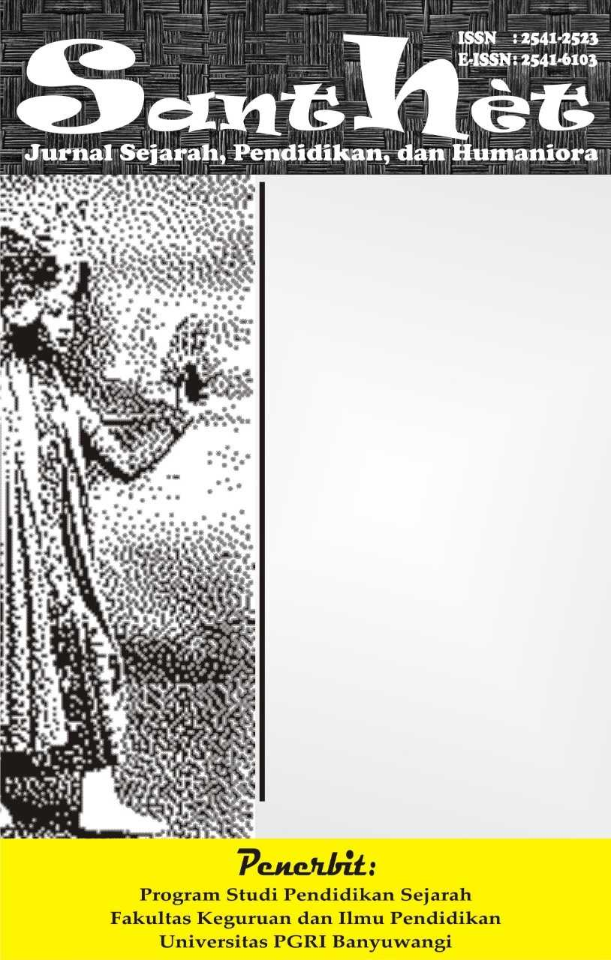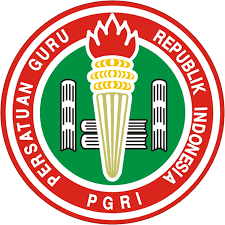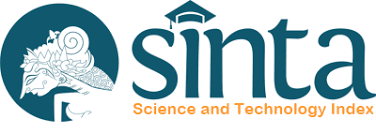TRACES OF SRIVIJAYA TRADE AND CULTURE: CERAMICS AND ANCIENT MONEY FOUND IN THE MUSI RIVER, PALEMBANG
DOI:
https://doi.org/10.36526/santhet.v9i2.5129Keywords:
Perdagangan maritim Sriwijaya, Sungai Musi Palembang, keramik kuno, uang kuno, akulturasi budaya.Abstract
Srivijaya was the largest maritime kingdom in Southeast Asia that reached its peak in the 7th to 13th centuries AD. Its strategic position on international trade routes made it a center of economic and cultural exchange connecting East Asia, South Asia, and the Middle East. One of the evidences of Srivijaya's trade and cultural acculturation traces can be found on the Musi River, which functioned as the main route for distributing trade goods. This study uses historical methods, including heuristics (collection of sources), source criticism, interpretation, and historiography, to analyze archaeological findings in the form of ceramics and ancient money found in the Musi River, Palembang. The results of the study show that the ceramics found in the Musi River, Palembang come from various dynasties in China, such as the Tang Dynasty (618–907 AD), Song (960–1279 AD), and Yuan (1271–1368 AD), indicating close trade relations between Srivijaya and China. In addition, the discovery of ancient currencies, including gold, silver, and copper coins from local and Chinese sources, reveals that Srivijaya already had a currency-based economic system in its trade transactions. Through source criticism and analysis, it was found that the flow of trade on the Musi River not only had an impact on the economic development of Srivijaya, but also influenced the social and cultural aspects of its people, such as in art, belief systems, and daily life patterns. This study confirms that Srivijaya was not only a regional trade center, but also an important node in the global trade network that accelerated the process of cultural acculturation. Using historical methods, this study provides deeper insight into the dynamics of Srivijaya trade and culture, and enriches understanding of the role of the Palembang Musi River in the maritime history of the archipelago.
References
Coedes, George, and L.-C. D. (1992). Sriwijaya : history, religion & language of an early Malay polity. Malaysian Branch Royal Asiatic Society.
Coedes, George, Hermann Kulke, Louis-Charles Damais, P.-Y. M. (2014). Kedatuan Sriwijaya. Depok: Komunitas Bambu.
Coedes, George, and L.-C. D. (1992). Sriwijaya : history, religion & language of an early Malay polity. Malaysian Branch Royal Asiatic Society.
Charles E. Orser. (2017). Historical Archaeology. Routledge.
Firmansyah, I. A., Mileniawati, J. P., & Rahayu, M. N. (2020). Sungai Bengawan Solo Dan Musi Dalam Tinjauan Sejarah Maritim. Riwayat: Educational Journal of History and Humanities, 30(2), 8–11. http://jurnal.unsyiah.ac.id/riwayat/
Guillot, C., & Lombard, D. (2008). Ancient Coins from Nusantara: The Monetary System of the Archipelago Before the Arrival of Europeans. EFEO.
Herlina, N. (2020). Metode sejarah. In Satya Historika (Vol. 110, Issue 9). http://digilib.isi.ac.id/6127/2/Pages from Metode Sejarah Revisi Akhir 2020.
Hartill, D. (1991). Cast Chinese Coins. New Generation Publishing.
Iskandar, Y., & Lahji, K. (2010). Kearifan Lokal dalam Penyelesaian Struktur dan Konstruksi Rumah Rakit di Sungai Musi-Palembang. Local Wisdom: Jurnal Ilmiah Kajian Kearifan Lokal, 2(2), 37-45.
Miksic. Jhon. (2013). Singapore & the Silk Road of the Sea 1300–1800. In NUS Press National University of Singapore. NUS Press National University of Singapore.
Manguin, P.-Y. (2022). Srivijaya. Oxford Handbooks Online.
https://doi.org/10.1093/oxfordhb/9780199355358.013.37
Munoz, P. (2006). Early Kingdoms of the Indonesian Archipelago and the Malay Peninsula. Editions Didier Millet
Nadeak, R. P. (2017). Bukit Siguntang: Peranannya Dalam Agama Buddha Pada Masa Kerajaan Sriwijaya. Forum Arkeologi, 29(1), 11. https://doi.org/10.24832/fa.v29i1.176
Rohmah, L., Sholeh, K., & Wandiyo, W. (2022). Analisis Temuan Benda-Benda Peninggalan Sejarah di Sungai Musi sebagai Sumber Pembelajaran Sejarah. Historia: Jurnal Pendidik Dan Peneliti Sejarah, 5(1), 65–80. https://doi.org/10.17509/historia.v5i1.36374
Rachmawan, T. F. (2024). Keramik Masa Sriwijaya.
https://docs.google.com/presentation/d/1acg3ZtgRkrEyORkR8bWPpEf8emrZKZHl/edit#slide=id.p1
Sholeh, K. (2015). Kemaritiman Sriwijaya dan Pedagang Muslim di Palembang : Abad VII-IX Masehi. Palembang: NoerFikri.
Sholeh, K., dkk. (2022). Sejarah dan Peradaban Sungai Musi Palembang. Kelaten: Laikesya
Sulistiyono, S. T. (2018). Paradigma Maritim dalam Membangun Indonesia: Belajar dari Sejarah. Lembaran Sejarah, 12(2), 81. https://doi.org/10.22146/lembaran-sejarah.33461
Sedyawati, E. (2018). Arkeologi Perdagangan di Nusantara: Dari Masa Prasejarah hingga Kolonial. Jakarta: Gramedia.
Taim, E. A. P., & Pusat. (2002). Studi Kewilayahan Dalam Penelitian Peradaban. 4.
Wade, G. (2009). An early age of commerce in Southeast Asia, 900-1300 CE. Journal of Southeast Asian Studies, 40(2), 221–265. https://doi.org/10.1017/S0022463409000149
Wikrama, A. A. N. A. W. B., & Dewi, N. P. W. K. (2024). Penerapan Asas Wawasan Nusantara Dalam Penguatan Geopolitik Indonesia Pada Pengelolaan Maritim Nusantara. Jurnal Ilmiah Cakrawarti, 7(1), 9–15. https://doi.org/10.47532/jic.v7i1.967
Wolters, O. (2011). Kemaharajaan Maritim Sriwijaya dan Perdagangan Dunia Abad III - Abad VII. Komunitas Bambu.





























